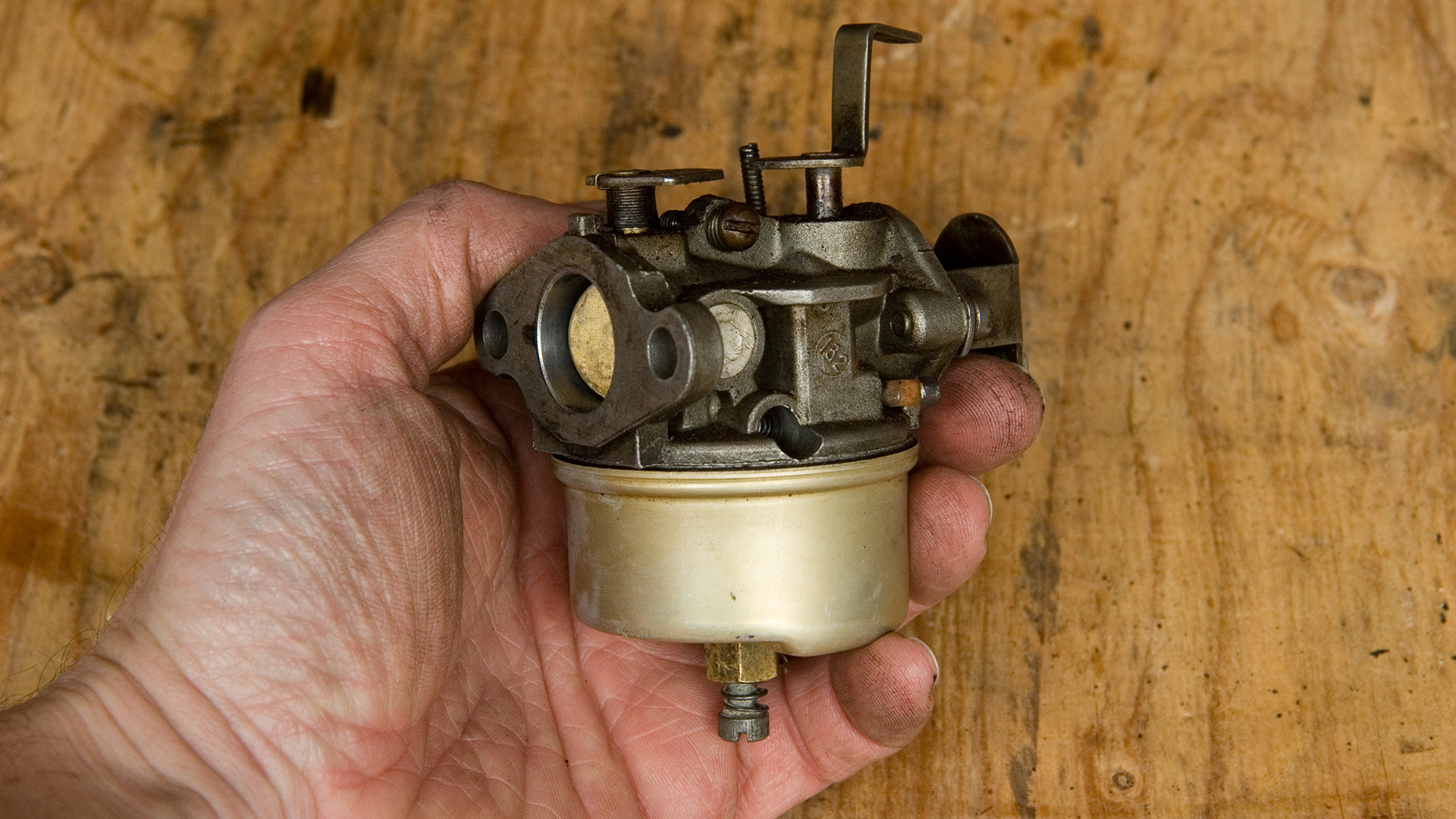Time for some mower maintenance? If your machine hasn’t been running reliably, you might need to figure out where is the carburetor on a lawn mower to see if it needs cleaning. A dirty carburetor can cause a variety of problems – like issues starting the mower or the engine stalling when in use. So, if cutting the grass has become even more of a chore thanks to a faulty lawn mower, checking the carburetor is a good place to start.
Learning how to maintain and repair your garden equipment is a great way to save money, as you won’t have to buy replacements as often. The best lawn mowers can last many years with regular maintenance, which also helps reduce the number of machines that go to waste when they could be repaired. Whether you use the best riding lawn mowers or a walk-behind mower to look after your lawn, this guide explains how to find, clean, and safely maintain the carburetor so your machine always runs like a dream.
Where is the carburetor on a lawn mower?
The carburetor is an essential component of a gas-powered lawn mower engine. In simple terms, it ensures that the correct balance of fuel and air enters the engine cylinder, where it will be ignited by the spark plug, combust, and make the engine work.
On a push or walk-behind mower, the carburetor is usually located on the side or top of the engine, just behind the air filter and above the base of the mower. You’re looking for a silver and black component, made mostly of metal. It’s likely it will be hidden by the air filter, which the carburetor is connected to. To find the air filter, look for a square or round plastic filter cover. This opens to allow access to the air filter, which sits in a plastic housing. You’ll need to remove the filter, then unbolt the housing to reveal the carburetor.
On a riding mower, the carburetor is generally found on the side or top of the engine. Like on a push mower, it will typically be behind the air filter, so you’ll have to remove the air filter and filter housing to access the carburetor, which is connected by a fuel line to the gas tank.
If in doubt, one of the best ways to find where is the carburetor on a lawn mower is to check the owner’s manual, as the location of the carburetor can vary depending on the model or manufacturer.
What is the importance of a carburetor on a lawn mower?
The carburetor is an essential component of any lawn mower engine, as Tom Monson, CEO of Monson Lawn & Landscaping, explains: “The carburetor on a lawn mower mixes air and fuel in the proper ratio for the engine to run efficiently and effectively.” As you mow your lawn, the carburetor adjusts the combination of fuel and air depending on how long the engine has been running, your speed, and the type of terrain. This ensures that you get the best performance out of your mower.
A clean carburetor that’s in good condition will keep your lawn mower running reliably and efficiently, which is why carburetor maintenance is an essential part of taking care of your mower. The most important thing is to keep the carburetor clean, because even if the engine is running, a dirty carburetor can still cause problems.
Signs of an issue with the carburetor
Because the carburetor on a lawn mower is usually hidden behind the air filter, you might not notice if it’s dirty. However, if you experience any of the following when cutting your grass, it could be a sign that the carburetor needs a clean;
• Problems starting the engine. You may have to pull the starter rope multiple times to get the engine running on your push mower, or turn the ignition more than once on your riding mower.
• Engine stalling. Once the mower is running, you might find that the engine stalls, either immediately after starting or while you are mowing the lawn.
• Spluttering and shaking. A dirty carburetor might cause the engine to sputter or shake while it’s running, making it more difficult to maneuver the machine.
• Increased fuel consumption. Despite mowing the lawn as you usually do, you might notice that your mower is using more fuel. This is a common sign that the engine isn’t running as efficiently, which could indicate an issue with the carburetor.

How to clean and maintain the carburetor
To get the best out of your lawn mower, you should clean the carburetor once a year. Once you’ve figured out where is the carburetor on a lawn mower like the one you have, you can remove the carburetor ready for cleaning. Follow these steps to do it yourself at home, keeping the owner’s manual for your mower nearby for reference;
1. Clean the machine
Clean the outside of the engine first to remove any dirt that could contaminate your newly-cleaned carburetor. Make sure you have a clear, clean work area where you won’t lose any small parts.
2. Remove the air filter
Open or remove the air filter cover, then remove the air filter and the filter housing.
3. Turn off the fuel valve
Where possible, turn off the fuel valve. Alternatively, crimp the fuel line using a clamp or crimping tool to prevent fuel leaking while you work. Some fuel will still spill out, so keep a cloth or rag handy.
4. Unfasten the carburetor
Remove the carburetor by unfastening the bolts that hold it to the engine and disconnecting the throttle and choke linkage cables.
5. Pay attention to the details
Make a note of where cables and bolts are positioned so you can replace them later. Keep any fasteners or small parts safe.
6. Remove the careburetor
Remove the carburetor from the mounting studs, noting its position so you don’t reinstall it the wrong way up.
7. Start to disassemble
Carefully disassemble the carburetor, using a carburetor cleaner spray or WD-40 to clean as you go. Ryan Farley, CEO of LawnStarter, recommends using a cleaner designed for small engines. “These are formulated to remove dirt, debris, and built-up varnish and gum deposits from the carburetor without damaging any delicate parts”.
8. Get rid of rust
Remove any signs of rust using sandpaper.
9. Allow it to air dry
Allow the carburetor to dry, before putting it back together.
10. Reattach the carburetor
Replace the carburetor on the mounting studs, reconnect the linkage cables, and reinstall the air filter, cover, and housing.
Safety tips for maintaining the carburetor
Keep these tips in mind to safely maintain the carburetor on your lawn mower;
• Although it’s possible to remove and clean a carburetor yourself, it’s a dirty, fiddly job that you might want to leave to the professionals. Your local small engine repair shop should be able to help.
• If you do decide to clean your own carburetor, always wear gloves and cover your work area to protect it from damage or debris, including fuel spillages.
• After cleaning your carburetor, you might find that your mower still doesn’t work reliably, which may mean that the carburetor or another part needs replacing. Again, it’s possible to fit a new carburetor yourself, but you may want to get some advice from a repair shop first.
• If you’re up for trying a DIY lawn mower repair, replacing the entire carburetor is usually simpler and more cost-effective than replacing individual gaskets or small parts.

